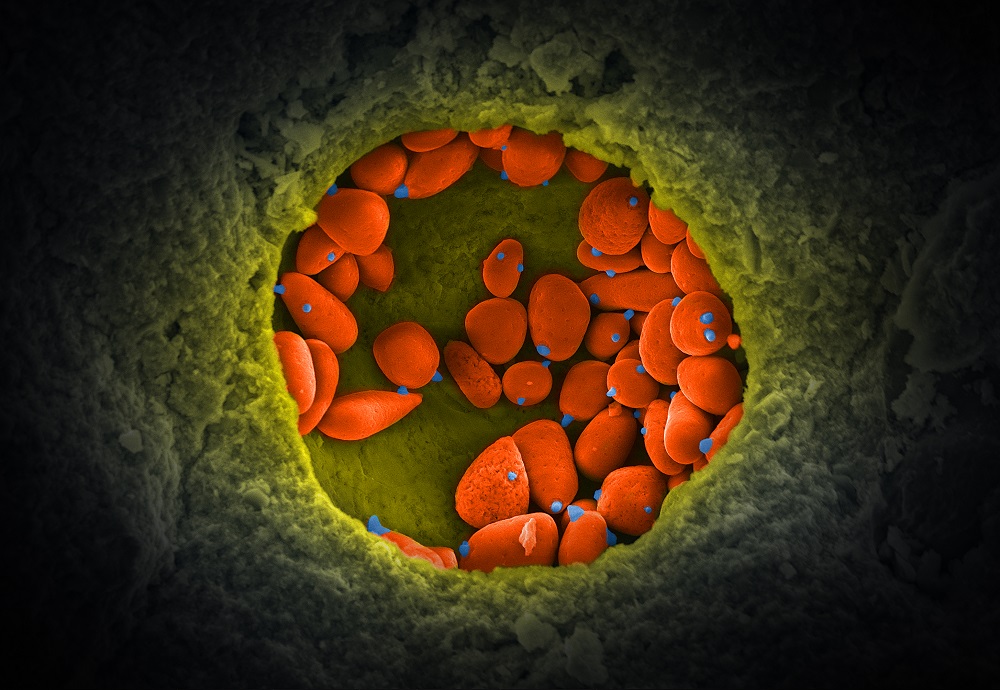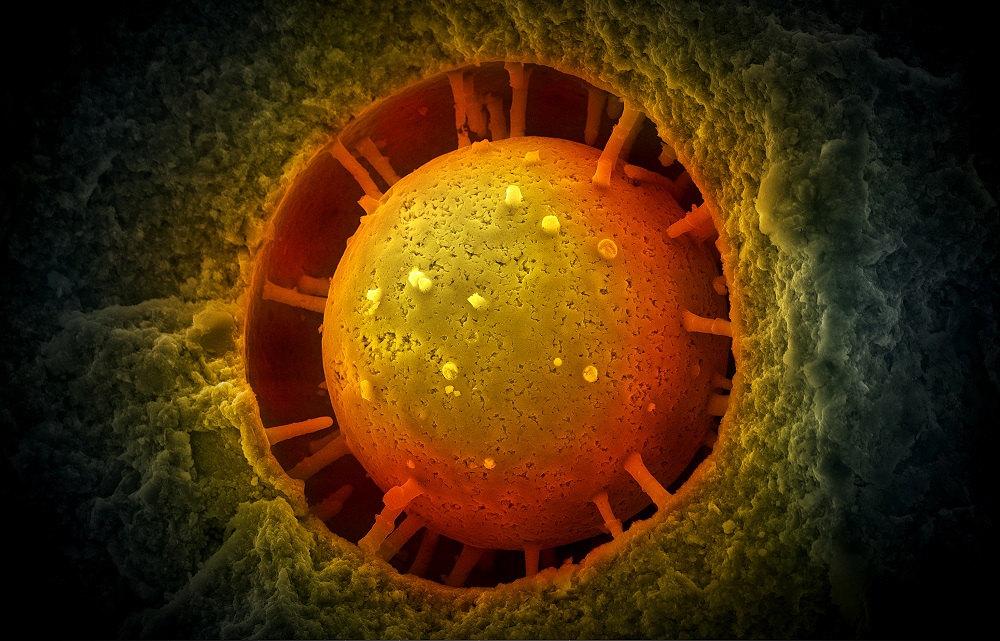Libby Roberts
15 April 2021: The University of Canberra’s Associate Professor Dr Michael Frese is working on Date a Fossil with the Australian Museum in Sydney, which will provide the opportunity for ordinary citizens to help identify microfossils using just their computers.
The project was conceptualised when Dr Frese, a researcher with the University’s Faculty of Science and Technology, discovered fossilised pollen on a fossilised insect he was studying with a very high-resolution microscope.
“When I spotted the pollen, I realised that we might actually be able to find more microfossils by scanning rock surfaces using a scanning electron microscope [SEM],” Dr Frese said.
“With this new technique, we were able to find and identify many pollen grains and spores in a particular iron-rich rock deposit, and then use these microfossils to date the rock.”

Together with Dr Matthew McCurry, Curator of Palaeontology at the Australian Museum, Dr Frese developed the idea of using a microscope able to make automated scans.
They then sought help from the Centre for Advanced Microscopy at the Australian National University, to configure an SEM to automatically scan across the surface of suitable rocks and collect thousands of images.
As analysing so many images would take a lot of time, the team came up with a plan to enlist citizen scientists to help spot and identify microfossils such as pollen, spores, fungi and algae.
“The SEM produces images that can be viewed sequentially on the web portal DigiVol,” Dr Frese said.
Dr McCurry said that the primary objective is to date fossil sites more precisely.
“Microfossils like pollen, foraminifera [single-celled organisms with shells] and dinoflagellates [single-celled organisms which can simultaneously functions as plants and animals] are great indicators of the age of a fossil site. The more microfossils we find, the more accurately we can date the site,” Dr McCurry said.
“We can also find new information about the environmental conditions of fossil sites – for instance, the proportion of different microfossils in the deposit can tell us how wet and hot the environment was in the past,” Dr McCurry said.

Dr Frese has always had a passion for fossils. By combining his backgrounds in microbiology and photography, he has helped discover many fossils.
“This site near Gulgong in New South Wales is particularly special, as it is a new Konservat-Lagerstätte that hosts a rich assortment of microfossils, plants, animals, insects, spiders, fish and bird feathers, all preserved in goethite [an iron (III) oxide-hydroxide],” said Dr Frese.
In palaeontology, a Konservat-Lagerstätte is a deposit known for the exceptional preservation of fossilised organisms or traces – it is crucial in providing answers to important moments in the history and evolution of life.
Dr Frese said that citizen science is gaining momentum around the world, and is allowing people to engage with the scientific process.
There are currently around 35,000 images available, and the Australian Museum is planning to acquire more as the project progresses.
For those unsure about joining in on the project, Dr McCurry said it’s best to just give it a try.
“There is always a learning curve when you take part in any new project, but the program is designed for anyone to get involved, no matter how much experience or knowledge you have, just give it a try,” Dr McCurry said.
“Our team has created a step-by-step guide to support you as you start making your way through the images, and we are confident you will get the hang of it in no time.”
To find out more about the Date a Fossilproject, the Australian Museum is holding a webinar on Thursday 15 April. More information can be found here.
Images supplied by Associate Professor Michael Frese.
Note: In these photos, colour is used to enhance features or for artistic reasons – unprocessed SEM images are black and white.
Captions:
Photo 1: What's brewing? – This SEM image shows a small colony of fossilised yeast cells (coloured orange). Almost all of the cells show bud and/or births scars (coloured blue). The fossils were found at McGraths Flat, a recently discovered fossil Lagerstätte near Gulgong, New South Wales.
Photo 2: This is a mystery! – This SEM image shows an ‘acritarch’ microfossil. The fossil was found at McGraths Flat. In the mid-Miocene (about 15 million years ago), McGraths Flat was a small oxbow lake in which organisms were rapidly encased in goethite. This mode of preservation not only produced fossils with exquisite details, it also allows SEM imaging of uncoated samples.
‘Acritarchs’ are microfossils of uncertain origin. While many are believed to be algae or dinoflagellates, the exact taxonomic affiliation of the depicted fossil remains a mystery. Whatever it is, this specimen nicely showcases the high-fidelity preservation of fossils from McGraths Flat.


